7 best World War II submarines
Submarines dictate the rules in a naval war and make everyone obediently follow the established order.
Those stubborn people who risk neglecting the rules of the game will face a quick and painful death in the cold water, amid floating debris and oil stains. Boats, regardless of the flag, remain the most dangerous fighting vehicles capable of crushing any enemy.
I bring to your attention a short story about the seven most successful projects of the submarines of the war years.
Type T boats (Triton-class), UK
The number of submarines built is 53.
Surface displacement - 1290 tons; scuba - 1560 tons.
Crew - 59 ... 61 people.
The immersion depth is 90 m (riveted body), 106 m (welded body).
Full speed in surface position - 15,5 nodes; in the underwater - 9 nodes.
The fuel supply of 131 tons provided the cruising range on the surface 8000 miles.
Armament:
- 11 torpedo tubes of caliber 533 mm (on boats of subseries II and III), ammunition - 17 torpedoes;
- 1 x 102 mm universal weapon, 1 x 20 mm anti-aircraft "Oerlikon".
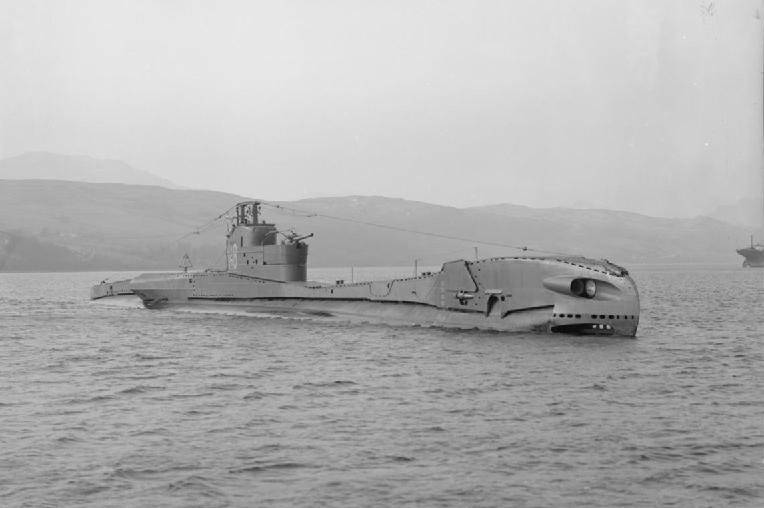
British underwater Terminator, capable of "knocking crap" out of the head of any enemy with the help of a nasal 8 torpedo salvo. The T-type boats were not equal in destructive power among all submarines of the WWII period - this explains their fierce appearance with a fancy nasal superstructure, which housed additional torpedo tubes.
The notorious British conservatism is in the past - the British were among the first to equip their boats with ASDIC sonars. Alas, in spite of its powerful weapons and modern means of detection, the T-type open-sea boats did not become the most effective among the Second World War British submarines. Nevertheless, they went through an exciting combat path and achieved a number of remarkable victories. "Tritons" were actively used in the Atlantic, in the Mediterranean, smashed Japanese communications in the Pacific Ocean, were noted several times in the cold waters of the Arctic.
In August, 1941, the submarines "Taigris" and "Trident" arrived in Murmansk. British submariners demonstrated a master class to their Soviet colleagues: in two campaigns, 4 enemy ships were sunk, incl. “Bahia Laura” and “Donau II” with thousands of soldiers of the 6 th Mountain Division. Thus, the sailors prevented the third German offensive on Murmansk.
Other famous T-type trophies include the German light cruiser Karlsruhe and the Japanese heavy cruiser Ashigara. Samurai “lucky” to get acquainted with the full 8-torpedo salvo of the submarine “Trencher” - having received 4 torpedoes into the board (+ another one of the stern TA), the cruiser quickly overturned and sank.
After the war, powerful and accomplished "Tritons" had been in service with the Royal Navy for a quarter of a century.
It is noteworthy that three boats of this type were acquired by Israel at the end of the 1960s — one of them, INS Dakar (formerly HMS Totem), died in the 1968 year in the Mediterranean Sea under unclear circumstances.
Boats of the type "Cruising" Series XIV, Soviet Union
The number of submarines built is 11.
Surface displacement - 1500 tons; scuba - 2100 tons.
Crew - 62 ... 65 people.
Immersion depth - 80 m, maximum - 100 m.
Full speed on the surface - 22,5 knots .; in underwater - 10 knots.
Navigation range in surface position 16500 miles (9 knots.)
Submerged navigation range - 175 miles (3 knots.)
Armament:
- 10 torpedo tubes caliber 533 mm, ammunition - 24 torpedoes;
- 2 x 100 mm universal guns, 2 x 45 mm anti-aircraft semi-automatic;
- Up to 20 mines barrage.
... 3 December 1941, the German hunters UJ-1708, UJ-1416 and UJ-1403 bombarded a Soviet boat that attempted to attack a convoy from Bustad Sund.
- Hans, do you hear this thing?
- Nein. After a series of explosions, the Russians lay to the bottom — I spotted three blows to the ground ...
“Can you tell where they are now?”
- Donnervetter! They are purged. Surely decided to surface and surrender.
German sailors were wrong. From the depths of the sea rose MONSTER - cruising submarine K-3 series XIV, brought down on the enemy squall of artillery fire. From the fifth salvo, the Soviet sailors managed to sink the U-1708. The second hunter, having received two direct hits, began to smoke and turned aside - his 20 mm anti-aircraft guns could not compete with the "weavers" of the secular submarine cruiser. Spreading Germans like puppies, K-3 quickly disappeared over the horizon on an 20-node turn.
Soviet "Katyusha" was a phenomenal boat for its time. Welded hull, powerful artillery and mine-torpedo armament, powerful diesel engines (2 x 4200 hp!), High surface speed 22-23 node. Huge autonomy for fuel reserves. Remote control valves ballast tanks. Radio station capable of transmitting signals from the Baltic to the Far East. Exceptional level of comfort: shower cabins, refrigerated tanks, two seawater desalination plants, an electrolley… Two boats (K-3 and K-22) were equipped with ASDIC land-lease sonars.
But, oddly enough, neither the high performance nor the most powerful weapons made the Katyusha effective. weapons - besides dark stories with the K-21 attack on the Tirpitz, during the war years, the XIV series of boats accounted for all 5 successful torpedo attacks and 27 thousands of br. reg. tons of tonnage drowned. Most of the victories were won using mines exposed. Moreover, their own losses amounted to five cruising boats.
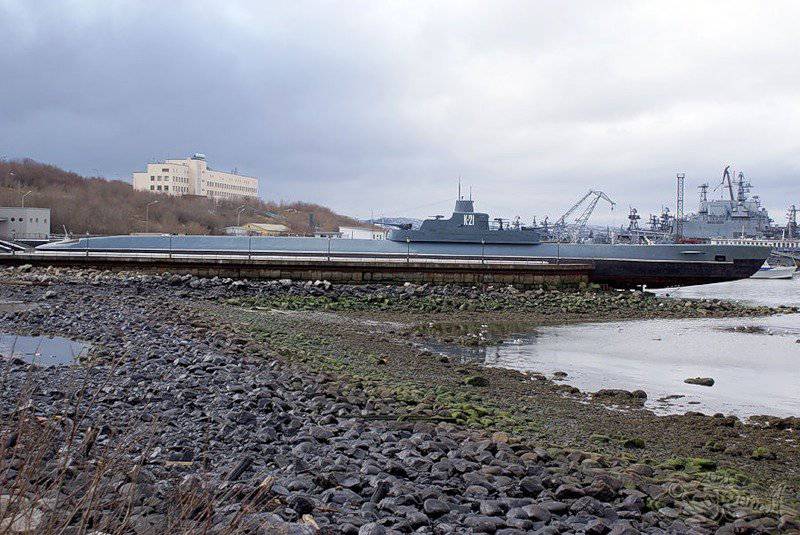
The reasons for the failures lie in the tactics of the "Katyusha" - the powerful submarine cruisers created for the expanses of the Pacific Ocean, had to "trample" in the shallow Baltic "puddle". When operating at depths of 30-40 meters, the huge 97-meter boat could have hit the ground with its bow, while its stern still stuck to the surface. Not so much easier for seamen-North Seamen — as experience has shown, the effectiveness of the Katyush combat use was complicated by the weak training of personnel and the lack of initiative of the command.
It's a pity. These boats were calculated for more.
"Baby", the Soviet Union
Series VI and VI-bis - built by 50.
Series XII - built by 46.
Series XV - built 57 (4 took part in the fighting).
TTX boats type M series XII:
Surface displacement - 206 tons; scuba - 258 tons.
Autonomy - 10 days.
Immersion depth - 50 m, maximum - 60 m.
Full speed on the surface - 14 knots .; in underwater - 8 knots.
Navigation range on the surface - 3380 miles (8,6 nodes).
Submerged navigation range - 108 miles (node 3).
Armament:
- 2 torpedo tubes, caliber 533 mm, ammunition - 2 torpedoes;
- 1 x 45 mm anti-aircraft semi-automatic.
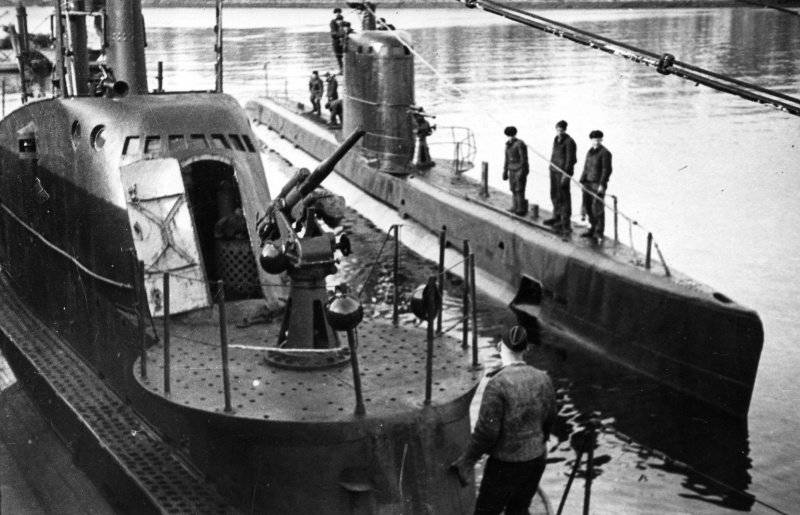
Mini submarine project for fast Pacific enhancement fleet - The main feature of type M boats was the possibility of transportation along the railway in fully assembled form.
In pursuit of compactness, many had to be sacrificed - the service at the “Little” turned into an exhausting and dangerous event. Severe living conditions, strong “bumpiness” - waves mercilessly threw the 200-ton “float”, risking breaking it into pieces. Shallow depth of immersion and weak weapon. But the main concern of the sailors was the reliability of the submarine - one shaft, one diesel engine, one electric motor - the tiny “Baby” did not leave chances to the careless crew, the slightest malfunction on board threatened to kill the submarine.
Kids evolved quickly - the performance characteristics of each new series were several times different from the previous project: improved contours, updated electrical equipment and means of detection, reduced the time of immersion, increased autonomy. The “babies” of the XV series didn’t resemble their predecessors of the VI and XII series: the one-and-a-half structure - the ballast tanks were moved out of the solid hull; The power plant received a standard two-shaft layout with two diesel engines and underwater electric motors. The number of torpedo tubes has increased to four. Alas, the series XV appeared too late - the main burden of the war was borne on itself by the “Baby” of the VI and XII series.
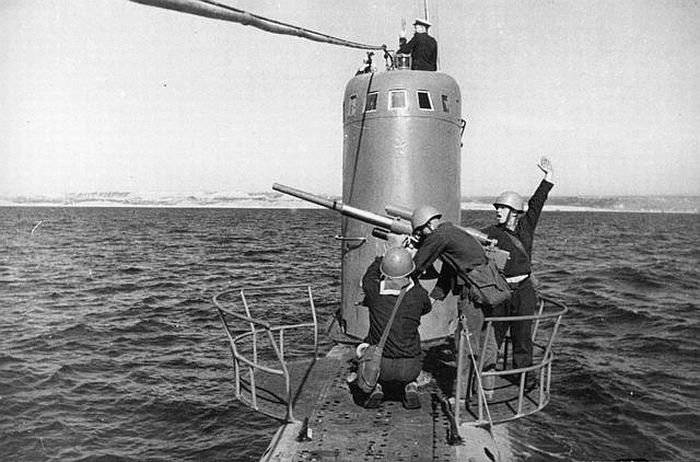
Despite their modest size and the entire 2 torpedoes on board, the tiny fish were simply terrifying “voraciousness”: during the years of World War II, the Soviet type M submarines sank 61 enemy ships with a total tonnage of 135,5 thousands of brts, destroyed 10 warships, and also destroyed 8 warships, as well as damaged XNUMX warships, and destroyed XNUMX warships, as well as damaged XNUMX .
The babies, originally intended only for operations in the coastal zone, have learned how to effectively fight in the open sea areas. They, along with larger boats, cut enemy communications, patrolled at exits from enemy bases and fjords, deftly overcame anti-submarine barriers and undermined transports right at piers inside protected enemy harbors. It is amazing how the Red Navy men were able to fight on these flimsy little ships! But they fought. And they won!
The “Medium” type boats of the IX-bis series, Soviet Union
The number of submarines built is 41.
Surface displacement - 840 tons; scuba - 1070 tons.
Crew - 36 ... 46 people.
Immersion depth - 80 m, maximum - 100 m.
Full speed in surface position - 19,5 nodes; submerged - 8,8 nodes.
Sailing range in surface position 8000 miles (10 nodes).
Submerged range 148 miles (node 3).
“Six torpedo tubes and the same amount of spare torpedoes on convenient shelves for reloading. Two guns with a large ammunition, machine guns, blasting property ... In short, there is something to fight. And 20-node surface speed! It allows you to overtake almost any convoy and attack it again. The technique is good ... "
- opinion of the commander of the C-56, Hero of the Soviet Union G.I. Shchedrin
"Eski" differed rational layout and balanced design, powerful weapons, excellent driving and seaworthy qualities. Initially, the German project of the company "Deshimag", modified under Soviet requirements. But do not rush to clap and remember the “Mistral”. After the start of serial construction of the IX series in the Soviet shipyards, the German project was revised to fully switch to Soviet equipment: diesel engines 1D, weapons, radio stations, a direction finder, a gyrocompass ... - in the boats that received the designation "series IX-bis", there was not a single bolts of foreign production!
The problems of combat use of the “Medium” type boats, in general, were similar to the cruiser K-type boats — locked in shallow water that is mine-infested; they were never able to realize their high combat qualities. Things were much better in the Northern Fleet - during the war years, the C-56 submarine commanded by G.I. Shchedrin made the transition through the Pacific and Atlantic oceans, moving from Vladivostok to Polar, later becoming the most productive boat of the Soviet Navy.
No less a fantastic story connected with the C-101 “bombshell” - during the war years the Germans and allies dropped over the 1000 depth charges onto the boat, but every time C-101 returned safely to Polar.
Finally, it was at C-13 that Alexander Marinesko achieved his famous victories.
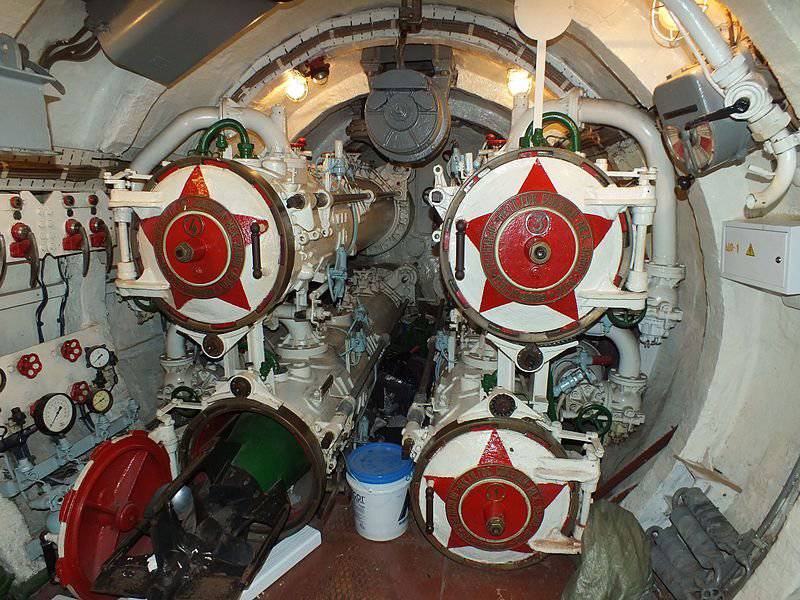
- from GI's memoirs Shchedrin
Gato type boats, USA
The number of submarines built is 77.
Surface displacement - 1525 tons; scuba - 2420 tons.
Crew - 60 people.
Immersion depth - 90 m.
Full speed on the surface - 21 knots .; submerged - 9 knots.
Navigation range on the surface 11 000 miles (10 knots.).
Submerged range 96 miles (2 knots.).
Armament:
- 10 torpedo tubes caliber 533 mm, ammunition - 24 torpedoes;
- 1 x 76 mm universal weapon, 1 x 40 mm anti-aircraft gun Bofors, 1 x 20 mm Oerlikon;
- one of the boats - USS Barb was equipped with a multiple rocket launcher system for shelling the coast.
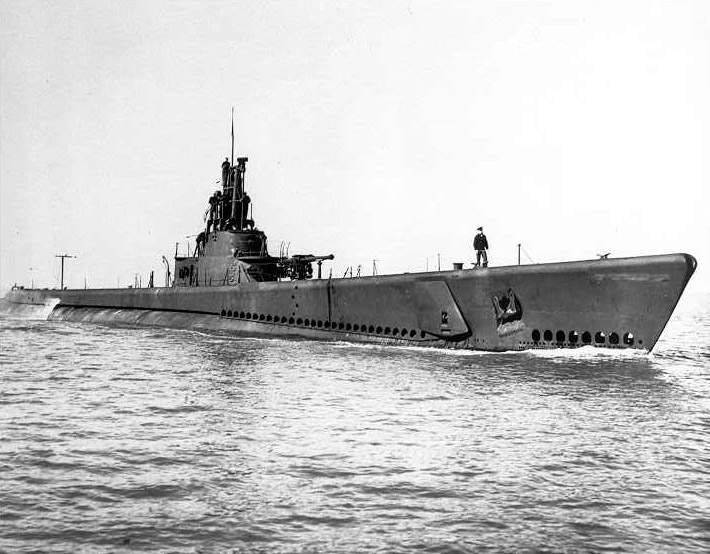
Ocean submarine cruisers of the “Gatou” type appeared at the very height of the Pacific War and became one of the most effective tools of the US Navy. They tightly blocked all strategic straits and approaches to the atolls, cut all supply lines, leaving the Japanese garrisons without reinforcements, and the Japanese industry - without raw materials and oil. In battles with the “Gatou”, the Imperial fleet lost two heavy aircraft carriers, lost four cruisers and a damn dozen destroyers.
High speed, slaughter torpedo weapons, the most modern electronic means of detecting the enemy - radar, direction finder, sonar. Sailing range, providing combat patrols off the coast of Japan when operating from a base in Hawaii. Increased comfort on board. But the main thing is the excellent training of the crews and the weakness of the Japanese anti-submarine weapons. As a result, the “Gatou” mercilessly cracked down everything - they were the ones who brought victory from the blue depths of the sea to the Pacific.
... One of the main achievements of the “Gatou” boats, which changed the whole world, is the 2 event of September 1944. On that day, the Finbek submarine detected a distress signal from a falling plane and, after many hours of searching, found a frightened pilot in the ocean, and the desperate pilot was already . Saved was one George Herbert Bush.
The list of “Flashcher” trophies sounds like a naval anecdote: 9 tankers, 10 transports, 2 patrol ships with a total tonnage of 100 231 brt! And for a snack, the boat grabbed the Japanese cruiser and the destroyer. Lucky devil!
Electrobots type XXI, Germany
By April 1945, the Germans had time to launch the 118 submarines of the XXI series. However, only two of them were able to achieve operational readiness and go to sea in the last days of the war.
Surface displacement - 1620 tons; scuba - 1820 tons.
Crew - 57 people.
The working depth of the dive is 135 m, the maximum depth is 200 + meters.
Full speed in surface position - 15,6 knots., Submerged - 17 knots.
Navigation range on the surface 15 500 miles (10 knots.).
Submerged range 340 miles (5 knots.).
Armament:
- 6 torpedo tubes caliber 533 mm, ammunition - 17 torpedoes;
- 2 Flak anti-aircraft automatic machine of 20 caliber mm.
Our allies were very fortunate that all the forces of Germany were thrown on the Eastern Front - the Fritz did not have enough resources to release a flock of fantastic "Electric Dogs" into the sea. Appear they a year earlier - and that's all, kaput! Another change in the battle for the Atlantic.
The Germans were the first to guess: everything that shipbuilders of other countries are proud of - large ammunition, powerful artillery, high surface speed of 20 + nodes - is of little importance. The key parameters determining the combat effectiveness of a submarine are its speed and power reserve in a submerged position.
Unlike its peers, "Eletrobot" was focused on the constant presence under water: the most streamlined corps without heavy artillery, fences and platforms - all for the sake of minimizing underwater resistance. Snorkel, six groups of batteries (3 times more than conventional boats!), Powerful electric. engines of full speed, quiet and economical electric. sneak engines.
The Germans calculated everything - the whole campaign "Electrobot" was moving at a periscope depth under the RDP, remaining difficult to detect for the enemy anti-submarine weapons. At great depths, his advantage became even more shocking: the 2-3 had a larger power reserve, at twice the speed of any wartime submarine! High stealth and impressive underwater skills, self-guided torpedoes, a set of the most advanced detection tools ... Electrobots opened a new milestone in the history of the submarine fleet, defining the vector of development of submarines in the postwar years.
The allies were not ready for a meeting with a similar threat - as shown by the post-war tests, the Electrobot were several times longer in range of mutual sonar detection by the American and British destroyers guarding the convoys.
Type VII boats, Germany
The number of submarines built is 703.
Surface displacement - 769 tons; underwater - 871 ton.
Crew - 45 people.
Immersion depth - 100 m, maximum - 220 meters
Full speed on the surface - 17,7 knots .; submerged - 7,6 knots.
Navigation range on the surface 8 500 miles (10 knots.).
Submerged range 80 miles (4 knots.).
Armament:
- 5 torpedo tubes caliber 533 mm, ammunition - 14 torpedoes;
- 1 x 88 mm universal weapon (up to 1942 year), eight options add-ons with 20 and 37 mm anti-aircraft installations.
* the specified performance characteristics correspond to the sub-series VIIC boats
The most effective warships from all who have ever plied the oceans.
Relatively simple, cheap, massive, but at the same time perfectly armed and lethal means for total underwater terror.
703 submarines. 10 MILLION tons of sunken tonnage! Battleships, cruisers, aircraft carriers, destroyers, corvettes and submarines of the enemy, oil tankers, transports with airplanes, tanks, cars, rubber, ore, machine tools, ammunition, uniforms and food ... The damage from the actions of German submariners exceeded all reasonable limits - if it were not for the inexhaustible industrial potential of the United States, which could compensate for any losses of the allies, the German U-bots had every chance to "strangle »Great Britain and change the course of world history.
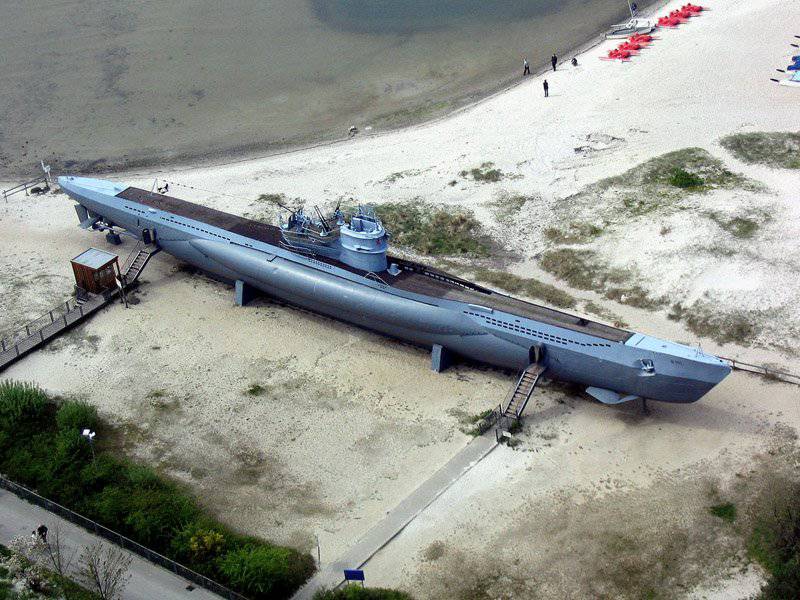
Often, the success of the “sevens” is associated with the “prosperous time” of the 1939-41. - ostensibly with the appearance of the allies of the convoy system and Asdik sonars, the success of the German submariners ended. A completely populist statement based on a misinterpretation of “prosperous times”.
The alignment was simple: at the beginning of the war, when each German boat had one anti-submarine allied ship, the G7s felt invincible masters of the Atlantic. It was then that the legendary aces appeared, sinking the enemy's 40 ships. The Germans were already holding the victory in their hands when the Allies suddenly launched 10 anti-submarine ships and 10 planes per each active Kriegsmarine boat!
Starting in the spring of 1943, the Yankees and the British began methodically to overthrow the Kriegsmarine with anti-submarine technology and soon achieved an excellent loss ratio - 1: 1. So they fought until the end of the war. The Germans ships ended faster than their opponents.
The whole history of the German “sevens” is a terrible warning from the past: what threat does a submarine represent and how big are the costs of creating an effective system to counter the underwater threat.
The article uses materials from the book "Soviet submarine shipbuilding", V. I. Dmitriev, Voenizdat, 1990 year.
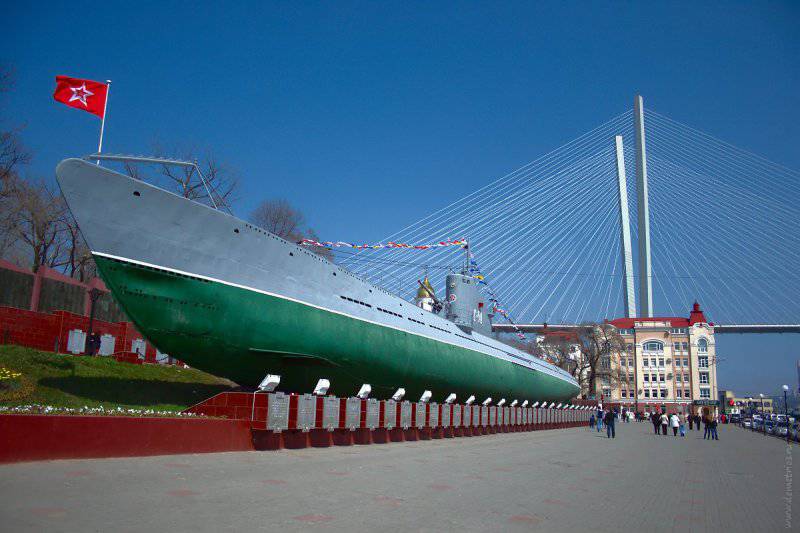
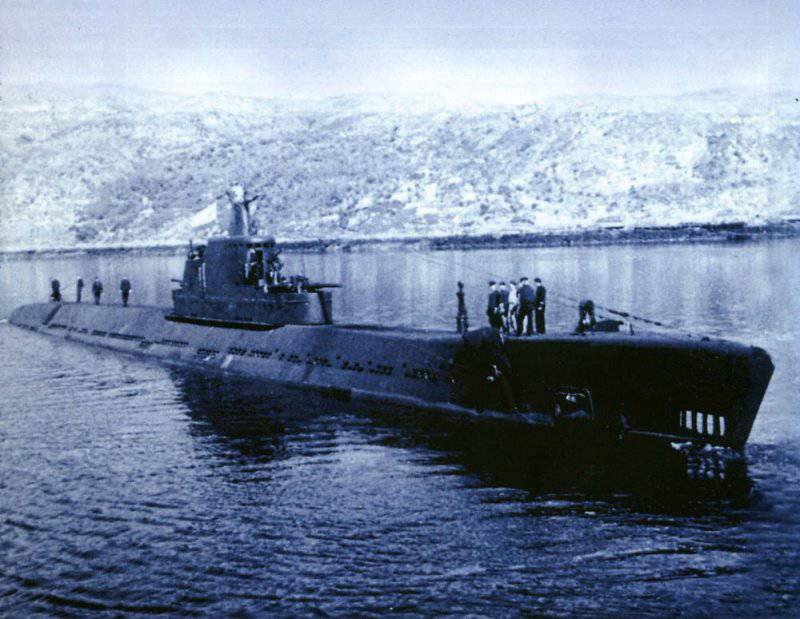
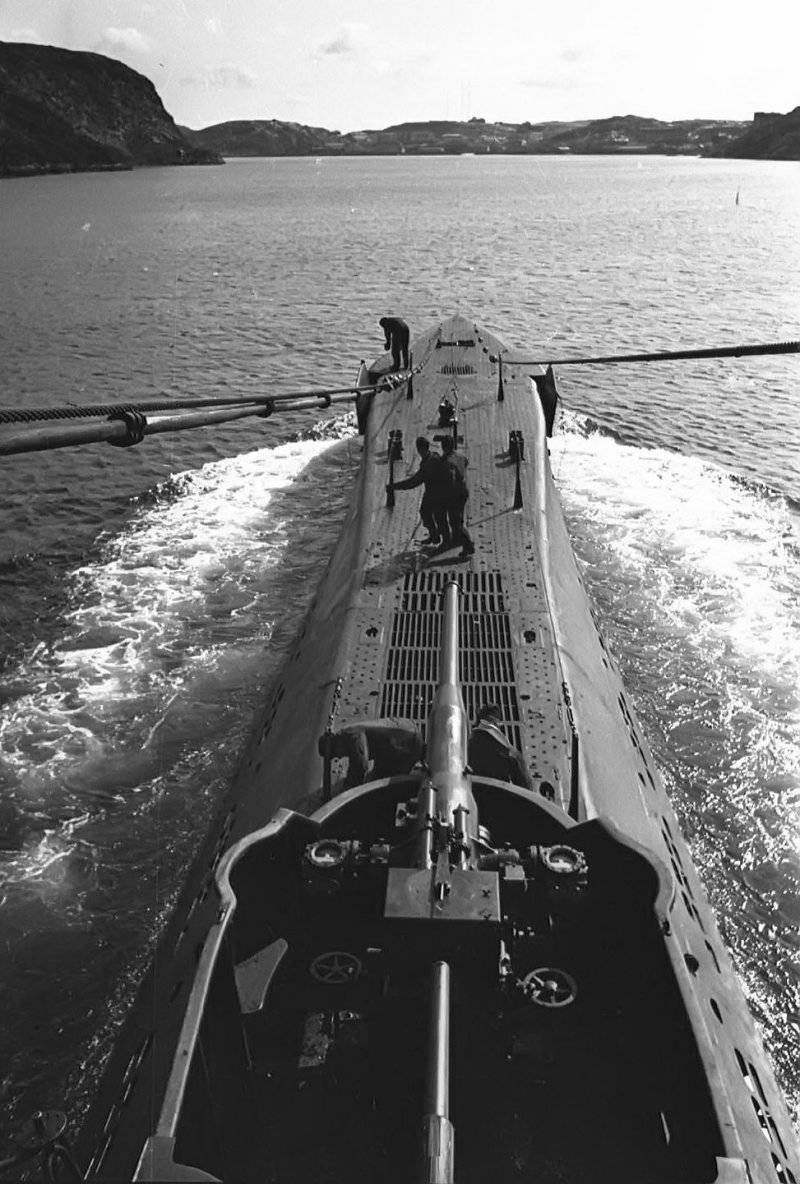
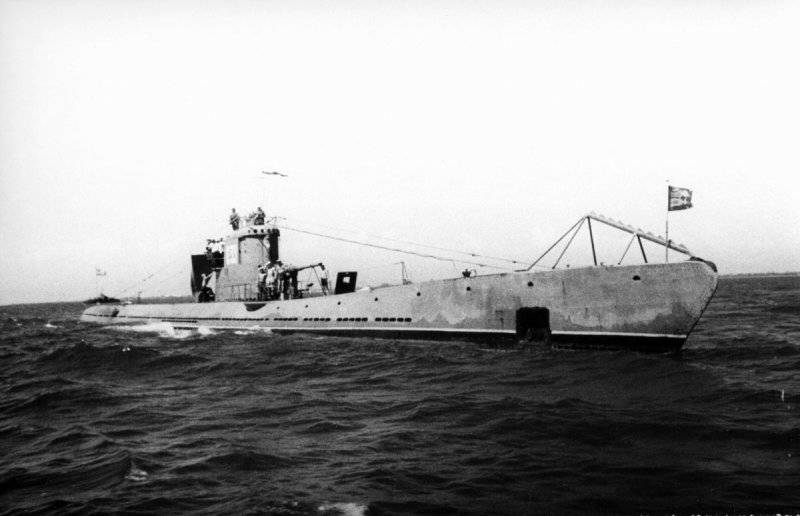
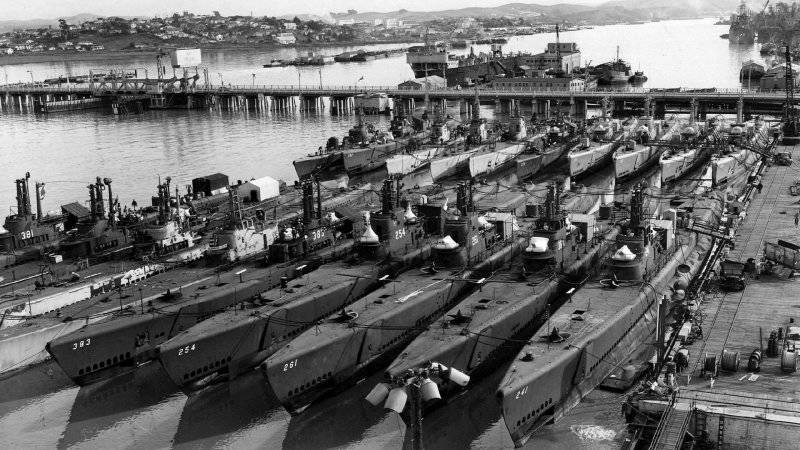
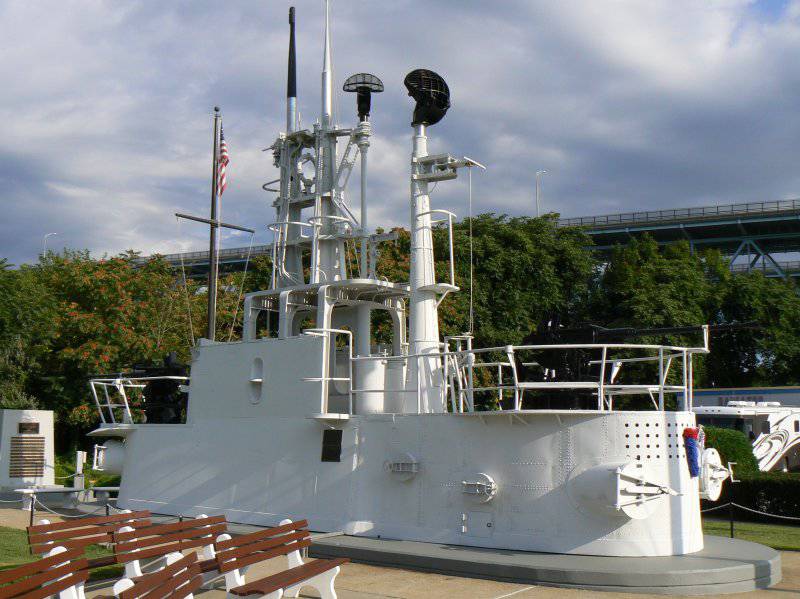
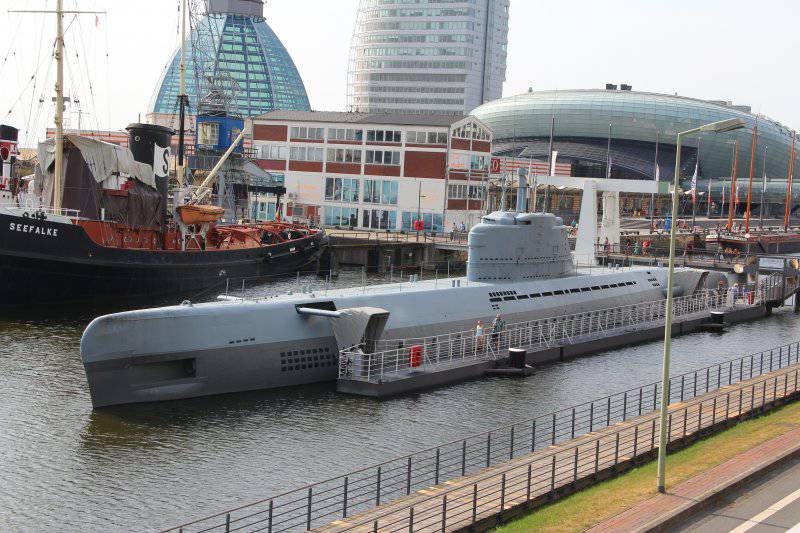
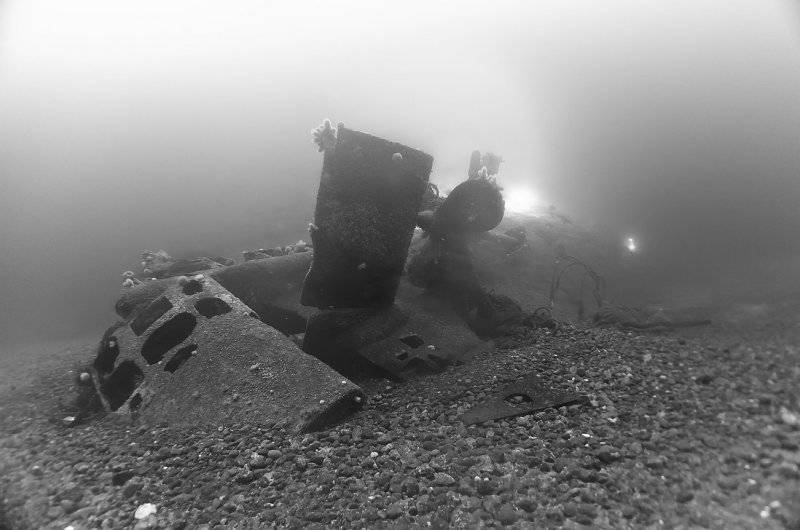
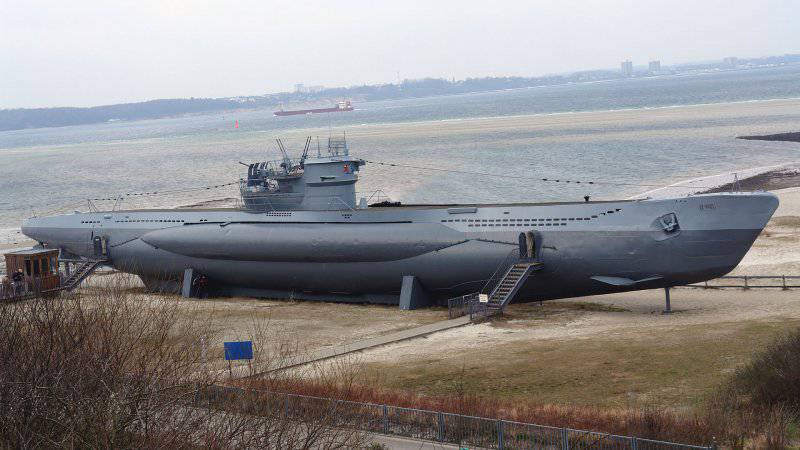
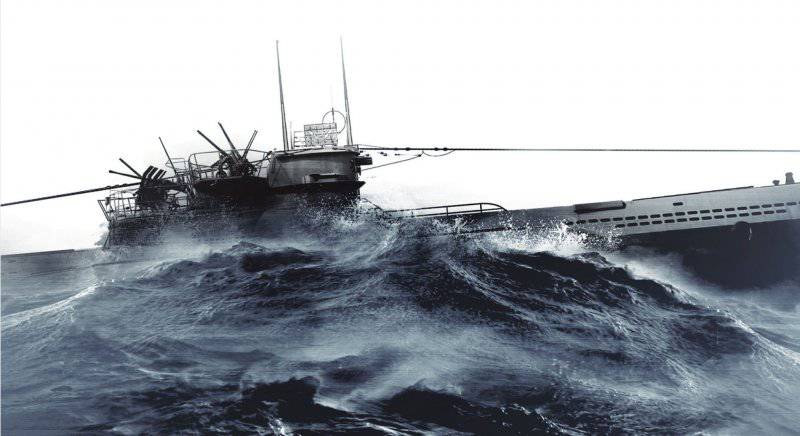
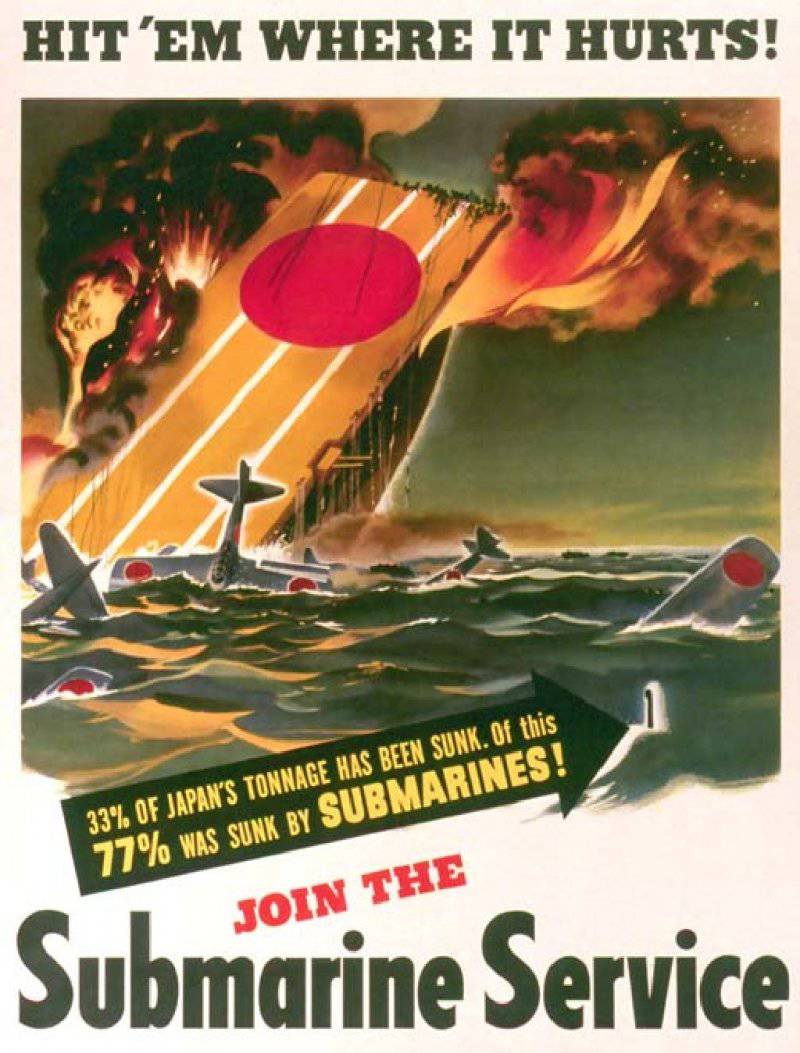
Information